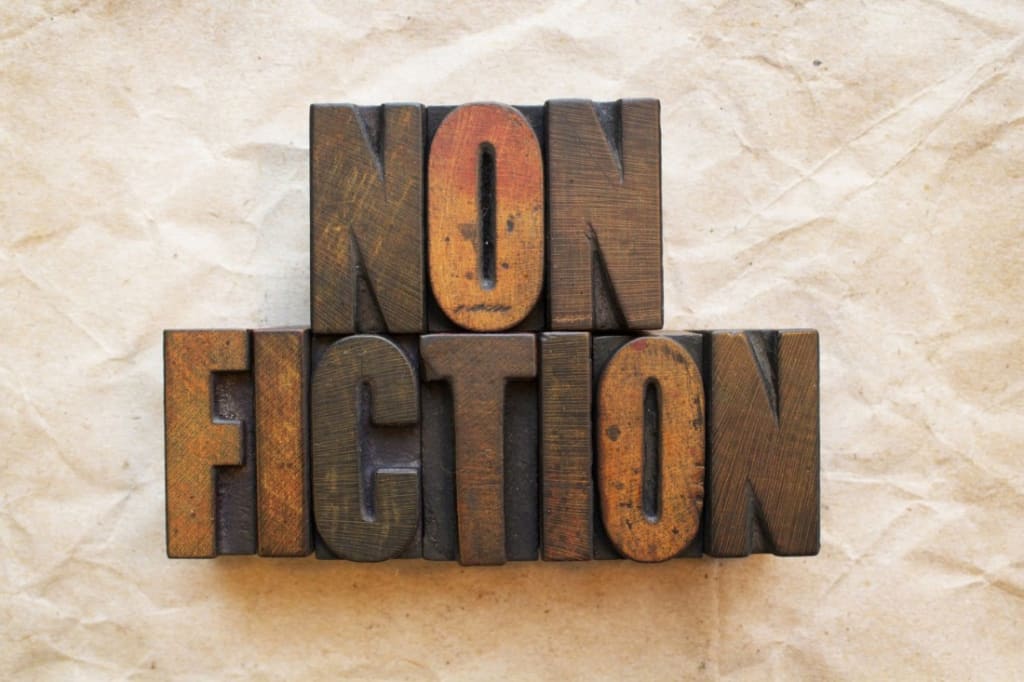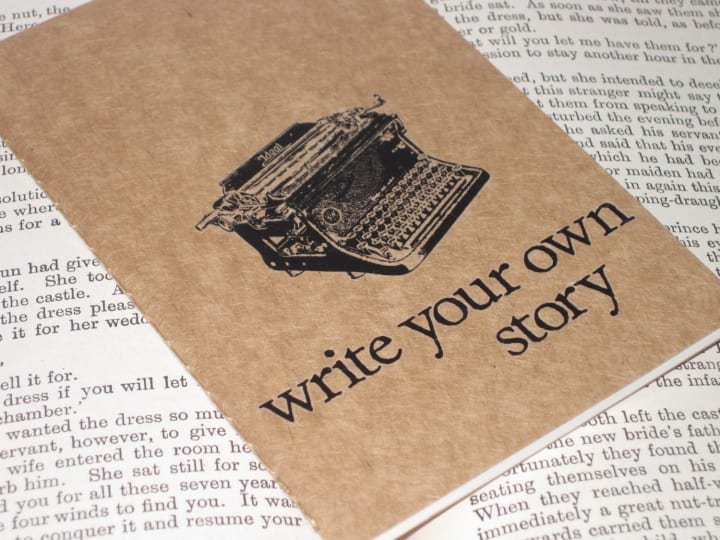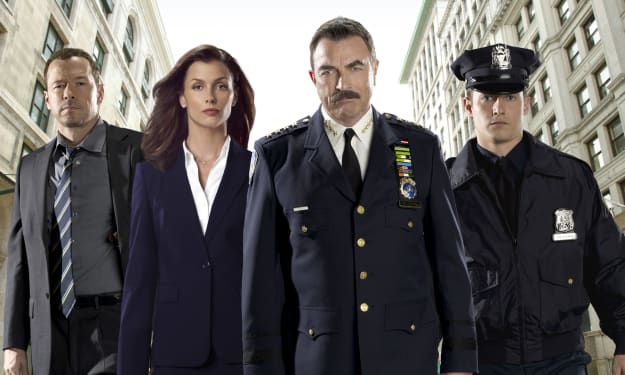The Different Types of Nonfiction
It isn't all textbooks and biographies.

The first thing people think of when nonfiction is mentioned is probably a biography, or maybe that textbook you spent 300 bucks on and have opened exactly twice. Neither of these things makes me excited for even the possibility of cracking open a nonfiction book, and in my heart, I'm a little bitter about it.
I love reading, and the thought that half of the world's books are closed off to me because they are uninteresting is heartbreaking. I spent a good 15 years of my life with my blinders firmly in place, ignoring the prospect of walking into the nonfiction section of the library and looking for something fun to read. Everything was about old fuddy-duddies long dead. What did they or their lives matter to me?
It turns out, I was missing out on a lot because I let my preconceived notions about what nonfiction writing entailed guide me. Past writing classes have forced me to learn and explore the nooks and crannies of nonfiction, and they include so much more than history. If only I had been brave, or a little more open-minded, that other half of the world's books could have bloomed before me much sooner.
Types of Nonfiction
While biographies and textbooks are important types of nonfiction writing and are still in huge demand for being written, there are a few others worth mentioning.
Creative nonfiction is where the majority of nonfiction resides. The stories and events are true and factual, but they are told with the colorful and poetic style that fiction is written.

Feature stories are a type of creative nonfiction that can typically be found in newspapers, magazines, or journals. These stories are told in the third person and can range from a broad topic of culture in an area the author has never been to something very specific, such as the relationship between tourism and fly-fishing. Reporters and journalists spend time covering events or spend enough time with the people they write about that they are their own authority on the subject, and include quotes, photos, and other sources pertinent to the credibility of their story.
Anytime you go on the internet searching for information about a place you'd like to travel or a person you're considering voting for that details their platform, you're reading a feature story.

Memoirs and personal essays are similar because they both deal with personal experiences, but they do have their differences.
Memoirs are usually longer, often delving into novel territory and typically cover the entirety of the writer's life. Memoirs are written in the first person, traveling through multiple events in their life. A good example of this might be Cheryl Strayed's Wild: From Lost to Found on the Pacific Crest Trail. Strayed's journey begins with the death of her mother sending her on a downward spiral, and she feels the only way back to herself is to backpack 1,100 miles by herself through harsh conditions. While the main event of the book is obviously her hike, she often reveals experiences from her childhood before her mother passed, and experiences after it that led her to hike the PCT.
On the other hand, personal essays are better suited to shorter stories. They are still told in the first person but are more focused on the single event. Annie Dillard's Teaching a Stone to Talk is an anthology of personal essays from her travels and experiences, ranging from the deeply emotional, memories of her childhood that continue to affect her, to the religious. Each story is its own event with its own message. It's possible that a couple of the stories could have been expanded upon to fit a memoir's length, but as a writer, she knew where her stories needed to end.
Styles of Creative Nonfiction
Within these types of creative nonfiction are several styles to work with. A writer does not have to be beholden to the dry, monotone-professor voice that makes reading most textbooks and many biographies so hard to get through. A lot of the time, readers don't even realize that what they're reading is categorized as creative nonfiction—they're spending too much time enjoying it to analyze it!
How-tos are a popular form of creative nonfiction. How to get over your ex, how to survive the holidays as an in-the-closet homosexual, how to navigate your first year of college away from home are all examples that are obviously drawing from personal experience. These authors wouldn't know how to do it themselves if they hadn't gone through it.
Advice column styles or "letters to the editor" styles piggyback off the how-to. Exploring your personal story through song lyrics are also scattered throughout creative nonfiction.
Another style writers often work with is a method called "the hermit crab essay." At first, it doesn't make sense or sound like it belongs in the realm of creative nonfiction, but you would be surprised at how often you come across it as a reader. This term basically just means that you are hiding your story (the crab) in the form of something that already exists (the shell). Often these stories reveal a vulnerability about the writer, shielded by whatever shell they have chosen to live in. Examples of this might be a recipe, step-by-step, prescription bottle side effects, a resume, or countless others. The options are literally endless.
Blogging is probably the most popular type of creative nonfiction currently, and the topics are infinite. Whether it is lifestyle, travel, makeup or book reviews, fitness, or food blogging, so much of it depends on your own knowledge and experiences. Sometimes these blog entries are reinforced by other sources, but it is always about you as the writer. This site itself, Vocal, is a vessel for so much creative nonfiction.
A Story that Matters
As both reader and writer, it is important to explore the different types and styles of writing. Growth comes from broadening horizons, trying new things and figuring out that some are not as bad or as boring as you thought. Ultimately, the type of story does not dictate its importance. Fiction is just as worth reading and writing as nonfiction is. Every book, article, and blog post mean something to its author. Every published piece is going to mean something to at least one reader, because everything is born of our own desire to write a story that matters.
About the Creator
M.G. Sprinkle
Aspiring author, killer of houseplants.






Comments
There are no comments for this story
Be the first to respond and start the conversation.